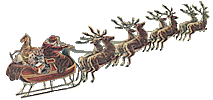the post, on that side on which you stand to turn the wheel, and a crank be put on this end to turn by,
in the same manner as a grindstone is turned.
Now there is room, with this height of the posts, to make a wheel four feet in diameter. You may take
your choice as to the circumference of the wheel; only this you may know, that the larger the wheel is,
the easier will the machine charge: it ought not to be less than three feet diameter, to form a strongly-
operating machine, for all seasons of the year.
The wheel may be made of boards, in a solid form, of half an inch thick each, and nailed together,
or put together with screws, the grain of one crossing the grain of the other, to prevent the wheel from
warping, &c. and a place cut for the band: or the wheel may be formed by two arms, crossed at right angles,
and halved together in the centre, leaving them sufficiently large to support the wheel on the shaft,
and the rim formed of four felloes, brought on the end of the arms, &c. and a place cut for the band.
The wheel must be hung high the inside of one of the posts, directly under the whirl which is put upon the
decanter, called a globe or cylinder.
In choosing a decanter to make a cylinder or globe of, observe that it is blown with a smooth surface, and
round; best that the bilge be blown in an oval, or the form of an egg. The late-blown decanters are of a
gradual contraction of diameter, from the bottom to the top, or nearly so, and are not so convenient. Observe
that the neck stands on a rich line with the bilge; and, for the above construction of woodworks, the height of
the decanter must be about nine inches.
To prepare the decanter for running - first, for the bottom, scribe a piece of wood, cherry,
birch, maple, or mahogany, as you please, about one quarter of an inch larger than the bottom of the
decanter; within that circle, scribe the circumference of the bottom of the glass,
and sink the glass into that nearly half an inch; this is to be stuck to the glass by a cement. But,
before that is done, a box of brass or iron must be had (a blacksmith can make them of iron) about an
inch, or an inch and a half square, and a little more than a quarter of an inch thick, with the
corners flatted down thin, and holes drilled or punched in them for screws to pass through into the
wood: In the centre of this box a hole must be drilled or punched, to
receive the points of the large screws, which are passed through the upright posts before described.
This box must be sunk a little into the outside of that wood, prepared for the bottom of the glass; that wood
being about an inch and a quarter thick, or an inch may be thick enough. These things being prepared
for the bottom of the glass, then proceed to prepare the wood for the neck of the decanter. The length
of this wood must be measured from the
Continue backward Continue forward


![]() Copyright © 2007, InterMedia Enterprises
Copyright © 2007, InterMedia Enterprises